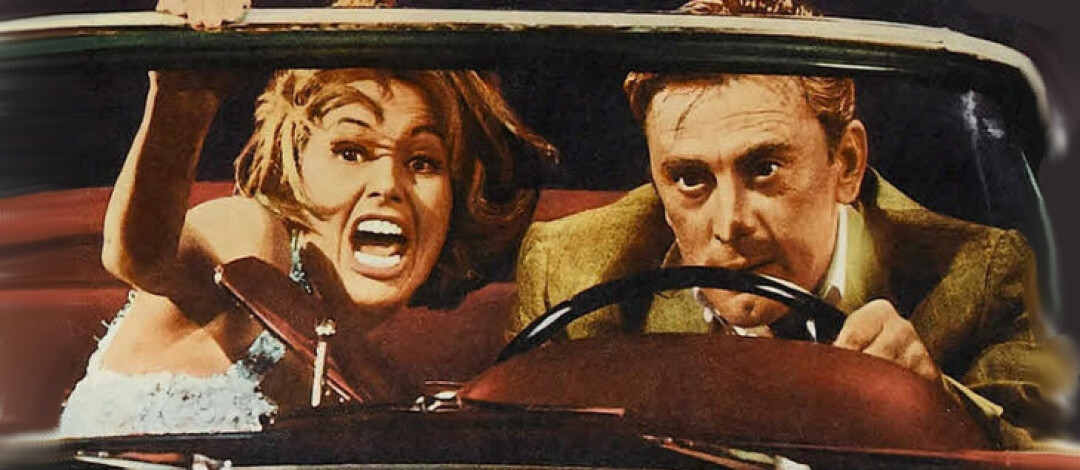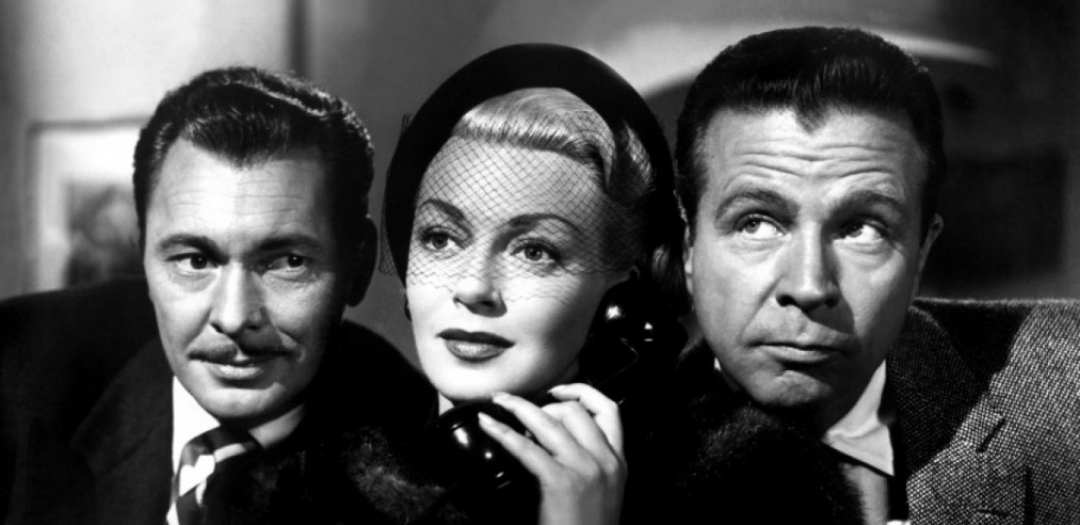Bad and beautiful Hollywood

Kirk Douglas was never better than in his performance as troubled actor Jack Andrus, seen here with the source of much of his trouble, ex-wife Carlotta (Cyd Charisse).
Hollywood and what it does to human beings is the subject for this week, and it’s all summed up in two movies made 10 years apart, both of which star Kirk Douglas and h were directed by Vincente Minnelli.
We begin this double feature with The Bad and the Beautiful from 1952. Douglas stars as movie producer Jonathan Shields, who is modeled after a number of legendary producers/film madmen, including Darryl Zanuck, David Selznick, Val Lewton and maybe even Orson Welles – there are several cinematic references to Citizen Kane, including Sheilds’ own Xanadu. And that his old Citizen Kane partner John Houseman is the producer for this film, well, it stands to reason Welles inspired some of the lead character’s megalamonia.
The movie is based on a 1949 short story titled “Of Good and Evil,” about a theater producer who abuses his colleagues in the process of gaining success. The working title of the film was Tribute to a Bad Man, but the studio decided people would mistake it for a western.
In a sense, it was a western, a modern one. Houseman decided to move the story from the East Coast theater world to the West Coast Hollywood dream factory, and with good reason since just two years earlier Joseph Mankiewicz had properly skewered Broadway with All About Eve. It was a brilliant move because the filmmakers were now able to reference real innovations and problems created by high-powered producers.
I especially love the segment that inspires the connections to B-movie producer Val Lewton, when Shields and Amiel are given an assignment that sounds very much like Lewton’s 1942 Cat People. Like Lewton and his director, Jacques Tourneur, Shields and Amiel decide to go for the less-is-more approach to their cheap horror film, and suddenly have a success on their hands.
The story is told mostly in flashback by three former colleagues of Shields who were badly abused by him – director Fred Amiel (Barry Sullivan), actress Georgia Lorrison, (Lana Turner – her character is the daughter of a famous actor with a Great Profile, so it’s safe to assume she is modeled on the tragic life of John Barrymore’s daughter, Diana – but some see elements of Minnelli’s ex-wife,Judy Garland, in the character) and writer James Lee Barton (Dick Powell, playing a character possibly modeled on William Faulkner, who like Barton, had a difficult ex-Southern belle for a wife).
All three have been summoned by Shields’ studio head Harry Pebbel (Walter Pidgeon) because Shields wants to work with all three again, but each recounts meeting, working with and then being screwed over by Shields.

The final semi-ambiguous scene of The Bad and the Beautiful, with all three former colleagues listening to Jonathan Shields pitch his next project.
From the director, he steals a movie. From the actress he pretends love just to get a performance out of her. From the writer, he arranges for a Latin lothario to steal his demanding Southern belle of a wife (the glorious Gloria Grahame), just to keep her out of the writer’s hair and allow him to work on Sheilds’ schedule.
Barton refers to Shields as “the man who will do anything to get what he wants.”
But after each flashback, Pebble reminds each of them that after Shields, each went on to greater success. At what cost doesn’t seem to matter to him, just as it apparently never mastered to Shields.
It’s a beautiful, stinging portrait of the movie industry that suggests it’s no business for weaklings.
Ten years later, many of the principals (Houseman/Minnelli/Douglas) reteamed to make Two Weeks In Another Town, another movie about how the industry can crush the human spirit, this one from the 1960 Irwin Shaw novel.
This time Douglas is washed-up actor Jack Andrus, recovering from a female- and alcohol-induced car crash and mental breakdown in a sanatorium. Then he gets a job offer from director Maurice Kruger (Edward G. Robinson). The pair had made six films together, just enough to have an intense love-hate relationship.
This is darker than The Bad and The Beautiful because the people are more vulnerable. They’ve been hurt more and redemption doesn’t appear to be in the cards for them. It’s the end of the studio era, and they feel adrift.
Douglas is especially good here. He usually plays the most boisterous and energetic character in the room. Not here. He is a crushed man. The invitation to go to Rome and work on a film gives him hope, but shortly after arriving in Rome, he learns the offer to act in the film has been retracted. He’s about to return to America when Kruger says he will pay him the offered $5,000 out of his own pocket if he will stay on to oversee the dubbing while Kruger finishes directing.
When Kruger has a heart attack and can’t finish filming, he asks Andrus to take over, and Andrus finds he has a deft hand with actors behind the camera. While Kruger was driving the young male star Davie Drew (George Hamilton) to the brink, he wants Andrus to direct his next film.
It looks like Andrus’ life has taken a turn in the right direction, but when he goes to visit Kruger in the hospital with good news about how the movie is going, he learns that Kruger’s harpy wife Clara (Claire Trevor) has been poisoning her huhsband’s mind with stories that Andrus was undermining Kruger’s picture. He’s fired on the spot and goes into a drunken rage not unlike the one that landed him in a sanatarium for three years.
There are some gorgeous color scenes throughout this underrated Hollywood melodrama.
